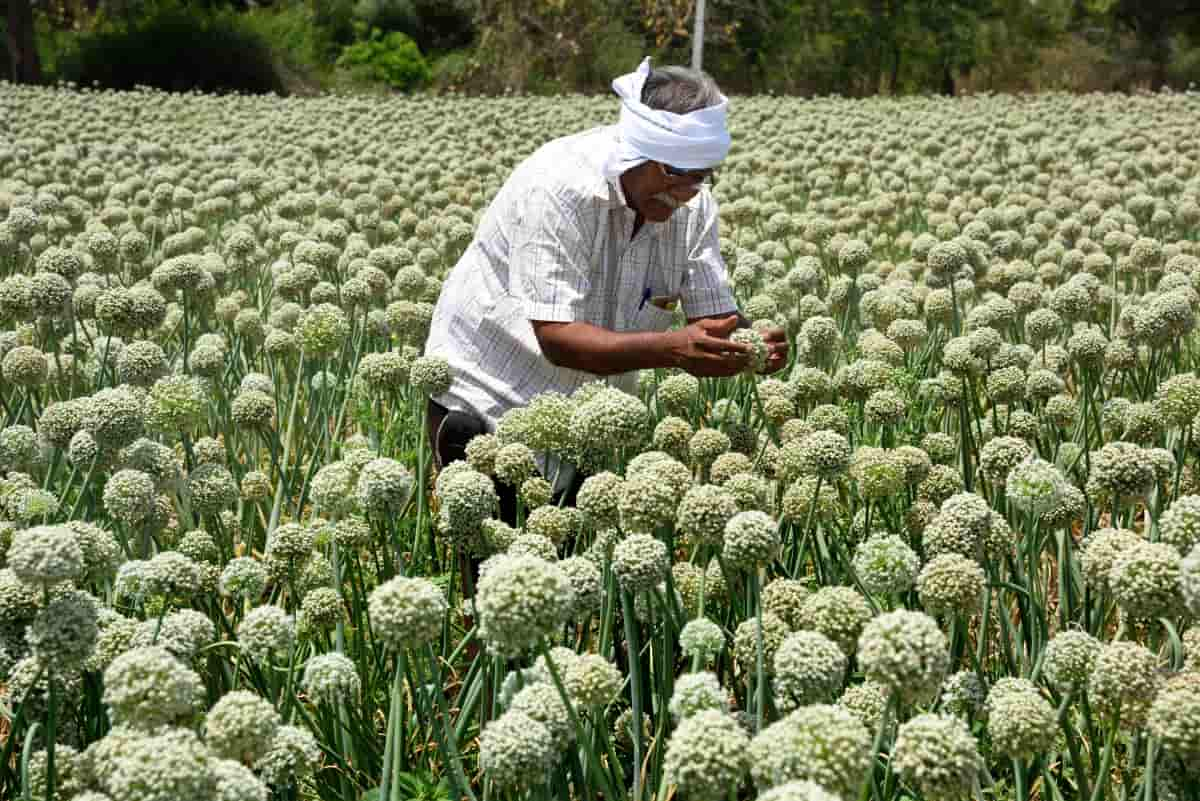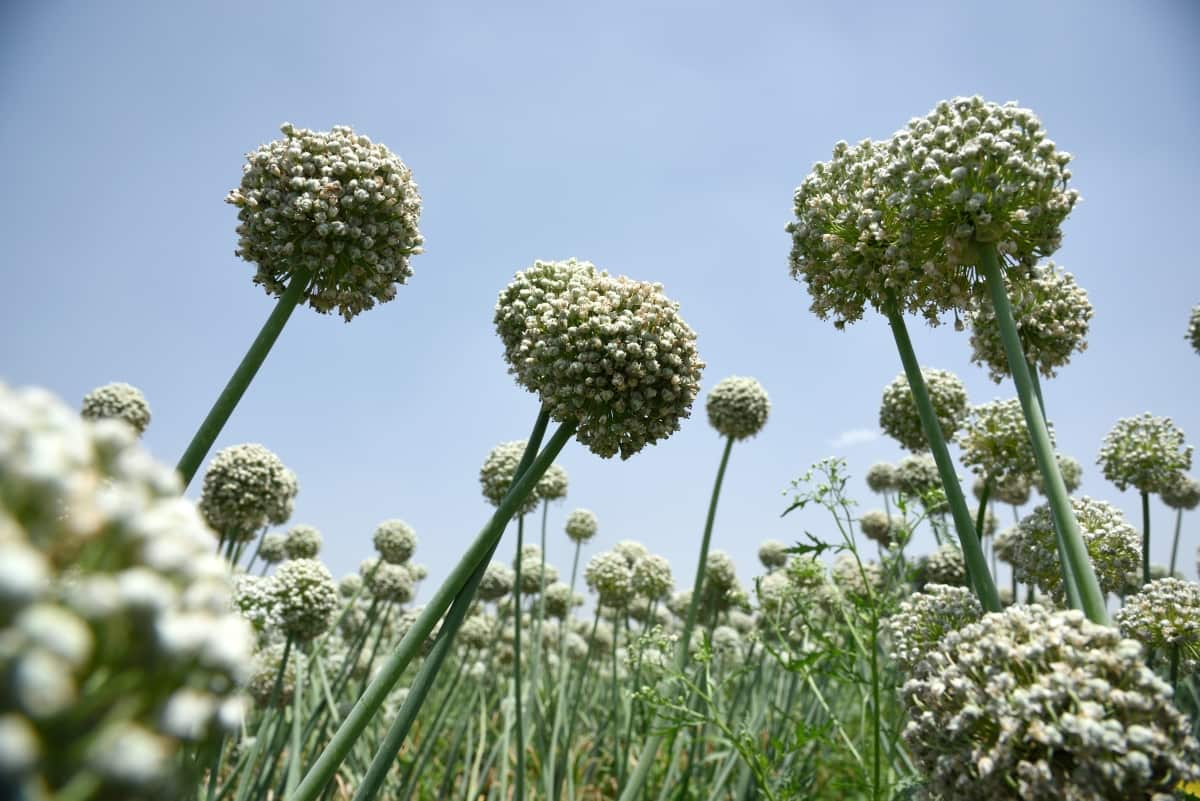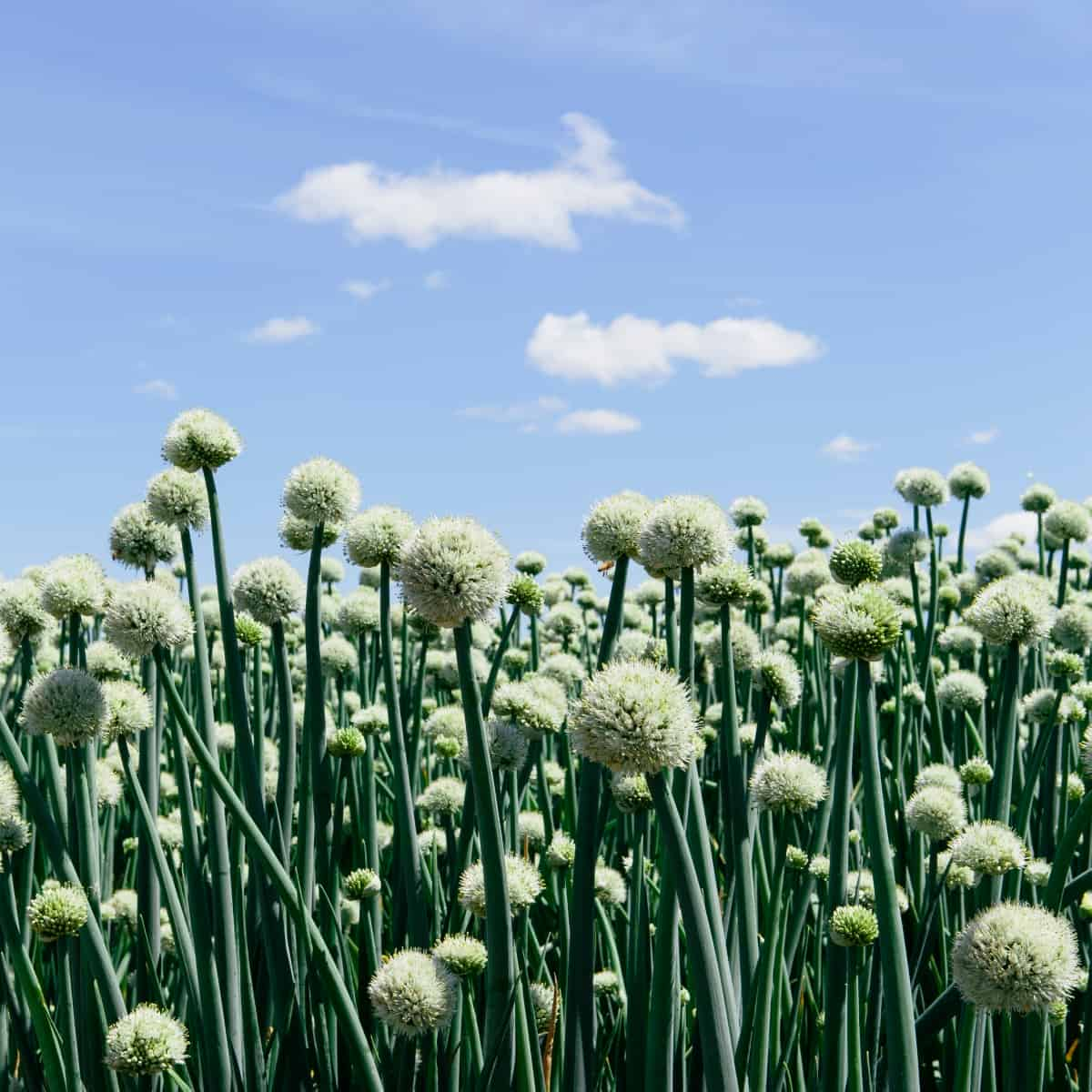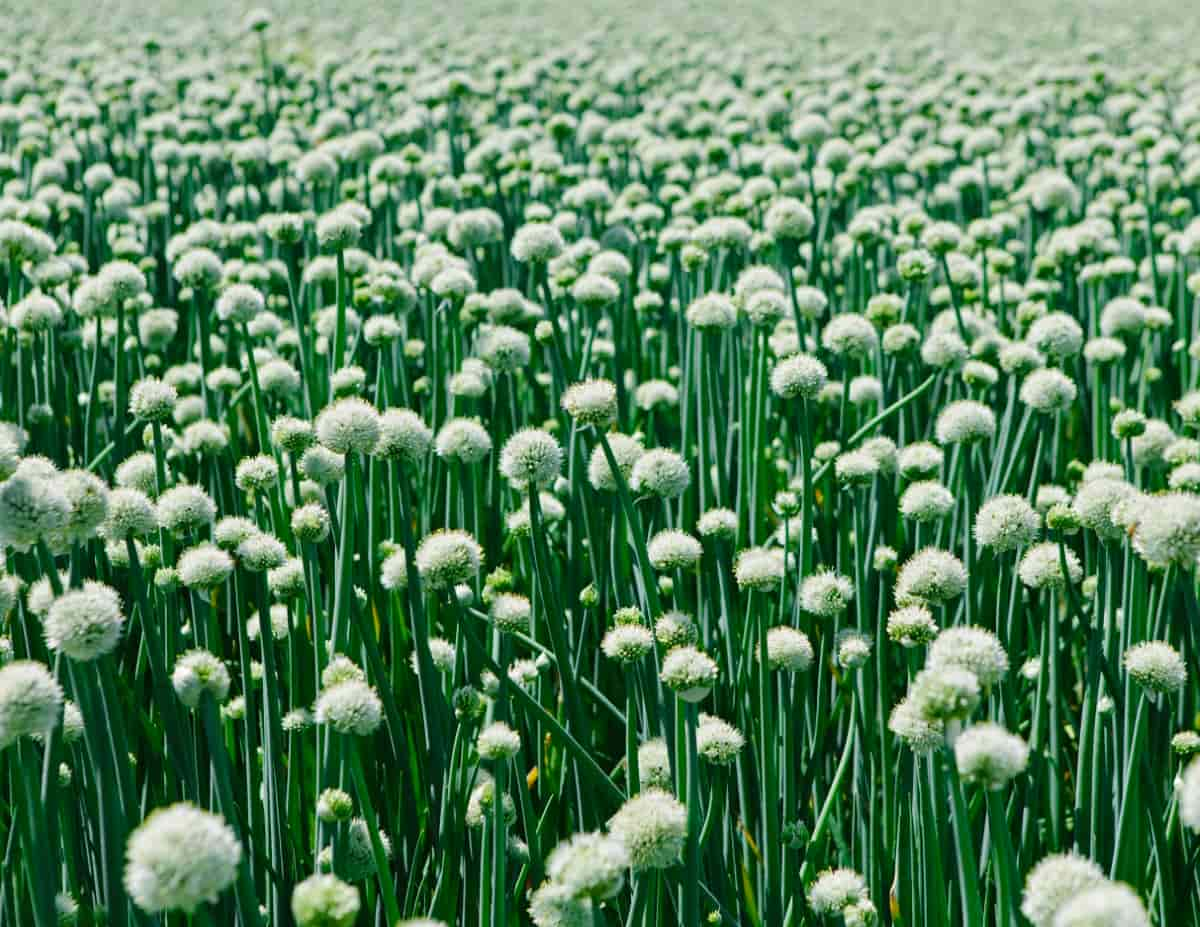Onions flowering or bolting occurs when the plant prematurely produces a flower stalk, diverting energy from bulb development. This phenomenon is triggered by various factors such as temperature fluctuations, day length, and stress. Understanding these causes is crucial for preventing bolting and ensuring a successful onion harvest. In this article, we delve into the onion flowering reasons and provide effective prevention strategies to help cultivators optimize their onion cultivation.

Why Do Onions Flower
The Biological Reasons Behind Onion Flowering
Day Length Sensitivity: Onions are categorized into long-day, short-day, and day-neutral varieties. Long-day onions initiate flowering when exposed to longer daylight periods, while short-day onions flower with shorter days. Day-neutral onions exhibit less sensitivity to day length.
Temperature Fluctuations: Sudden changes in temperature, especially when there is a shift from cooler to warmer conditions, can trigger bolting. Warm temperatures signal to the onion that it’s time to reproduce.
Plant Age: As onions age, they become more susceptible to bolting. Younger plants are generally less prone to flowering.
Stress Responses: Environmental stressors, such as water scarcity or nutrient deficiencies, can induce bolting as a survival mechanism. The plant perceives stress and interprets it as a sign to produce seeds for future generations.
Genetic Factors: Certain onion varieties are genetically predisposed to bolting. Selecting onion cultivars adapted to local conditions can help minimize this risk.
Understanding Onion Bolting Causes: Why Do Onions Flower Prematurely?
Temperature Effects
- Warm Conditions: Onions are sensitive to temperature changes. Exposure to prolonged warmth, especially after a period of cooler temperatures, signals the plant to transition from vegetative growth to reproductive stages. This often leads to premature flowering.
- Optimal Range: Onions prefer cool to moderate temperatures during bulb development. Sudden spikes in temperature can disrupt this phase and prompt the plant to allocate energy toward flowering.
Daylight Duration
Day Length Sensitivity: Onions are categorized into long-day, short-day, or day-neutral varieties. Long-day onions initiate flowering with longer daylight exposure, while short-day onions do so with shorter days. Day-neutral onions have a lower sensitivity to day length.
Transition to Reproductive Phase: The plant perceives changes in day length as a signal to switch from vegetative growth to reproduction. Adequate exposure to the required day length is crucial for bulb development and preventing onion flowering prematurely.
Onion Flowering: The Role of Onion Plant Stress Factors in Bolting
Water Scarcity: Onions are sensitive to water availability. Lack of water induces stress, signaling to the plant that it’s facing adverse conditions. In response, the plant may accelerate onion flowering cycles, leading to premature flowering.
Nutrient Deficiencies: insufficient soil nutrients can stress onion plants, triggering bolting. A deficiency in essential elements disrupts normal growth patterns, causing the plant to prioritize reproduction over bulb development.
Competition for Resources: Onions experiencing competition for resources such as sunlight, space, and nutrients may perceive this as stress. In such instances, the plant might prioritize producing seeds for future generations rather than investing energy in bulb formation.
The Impact of Soil Conditions on Onion Flowering
Moisture Levels: Consistent and adequate soil moisture is vital for onion growth. Prolonged periods of either waterlogged or dry conditions can induce stress, triggering premature flowering.
Nutrient Content: Balanced soil nutrition is essential for onion development. Nutrient deficiencies or excesses can lead to stress, prompting the plant to divert energy towards reproduction instead of bulb formation.
pH Levels: Onions prefer slightly acidic to neutral soil pH. Extreme pH levels can affect nutrient availability, impacting the plant’s ability to undergo proper vegetative growth and bulb development.
Soil Structure: Well-draining soil with good aeration promotes healthy root development and discourages stress-induced bolting.
In case you missed it: How Drip Irrigation in Onion Cultivation Can Double the Yield and Profit

Genetic Variability in Onion Flowering: Why Some Onion Varieties Flower More than Others
Day Length Sensitivity: Onions are classified into long-day, short-day, and day-neutral varieties based on their response to daylight duration. Genetic predisposition dictates whether an onion variety will initiate flowering with longer days (long-day), shorter days (short-day), or exhibit less sensitivity to day length (day-neutral).
Vernalization Requirements: Some onion varieties have specific vernalization requirements, needing exposure to cold temperatures to induce flowering. Genetic differences determine the degree of vernalization needed for reproductive development.
Adaptation to Local Conditions: Onion varieties are bred for adaptation to specific climates and regions. Varieties not well-suited to local conditions may experience increased stress, leading to a higher likelihood of bolting.
Bolting Resistance: Breeders work to develop onion varieties with enhanced resistance to bolting. Varieties with robust genetics for bolting resistance are less likely to flower prematurely under unfavorable conditions.
The Relationship Between Onion Age and Flowering Tendencies
Onion age plays a crucial role in determining flowering tendencies, with younger plants exhibiting a lower susceptibility to premature flowering compared to older counterparts. Young onions prioritize vegetative growth and bulb development, directing energy toward establishing a robust foundation.
As onions mature, they become more sensitive to environmental triggers, such as changes in temperature and day length, prompting the initiation of flowering. This correlation between onion age and flowering tendencies underscores the importance of timely onion cultivation best practices. Harvesting onions at an optimal stage, coupled with appropriate environmental management, helps mitigate the risk of bolting and ensures a higher likelihood of achieving desired bulb development.
Nutrient Levels and Their Influence on Onion Bolting: Nutrient Impact on Onion Flowering
- Nitrogen Content: Excessive nitrogen promotes vigorous foliage growth at the expense of bulb development, increasing the risk of bolting.
- Phosphorus Deficiency: Inadequate phosphorus can hinder energy transfer within the plant, disrupting normal growth patterns and potentially inducing premature flowering.
- Potassium Balance: Insufficient potassium affects water uptake and nutrient transport, contributing to stress and increasing the likelihood of bolting.
- Sulfur Availability: Sufficient sulfur is crucial for the synthesis of essential amino acids. A deficiency can lead to imbalances in plant metabolism, potentially triggering bolting.
- Micronutrient Imbalances: Inadequacies in essential micronutrients, such as zinc or boron, can disrupt hormonal regulation, impacting the plant’s reproductive development and increasing susceptibility to bolting.
In case you missed it: How to Prevent Onion Rot Naturally: Best Ways to Control with Natural and Organic Treatment

Watering Practices and Their Effect on Onion Flowering
- Consistent Moisture: Onions require consistent soil moisture for proper growth. Fluctuations in watering can induce stress, potentially triggering premature flowering.
- Avoiding Waterlogged Conditions: Excessively wet soil can lead to poor oxygen availability to the roots, causing stress that may prompt onions to bolt.
- Well-Draining Soil: Ensuring well-draining soil helps prevent waterlogged conditions, reducing the risk of stress-induced bolting.
- Balanced Irrigation: Uniform and balanced watering practices throughout the growing season promote stable onion development and minimize stress factors that may contribute to premature flowering.
Potential Climate Change Effect on Onion Flowering Patterns
Climate change poses significant concerns for onion cultivation, potentially altering traditional flowering patterns. Rising temperatures, one of the consequences of climate change, can trigger premature flowering, or bolting, in onions. As temperature regimes shift, onion plants may experience stress and perceive warmer conditions as a signal to transition to the reproductive phase.
This shift could lead to a mismatch between the plant’s developmental stages and environmental cues, impacting bulb formation and ultimately affecting crop yield. Additionally, changes in precipitation patterns and increased frequency of extreme weather associated with climate change may introduce additional stressors, influencing onion flowering patterns and necessitating adaptive strategies for growers, such as selecting climate-resilient onion varieties and adjusting planting schedules.
In case you missed it: Onion Growing Stages Timeline: From Seed Germination to Harvest

Conclusion
Understanding the intricate factors influencing onion flowering is essential for successful cultivation. By adopting proactive measures such as selecting appropriate onion varieties, managing soil health, and implementing proper watering practices, growers can mitigate the risk of premature flowering, ensuring robust bulb development and a more fruitful harvest.
- Feed Your Flock for Less: Top 10 Tips to Save on Chicken Feed
- Ultimate Guide to Ossabaw Island Hog: Breeding, Raising, Diet, and Care
- Hatching Answers: The Top 10 Reasons Your Chickens Aren’t Laying Eggs
- Eggs and Economics: Breaking Down the Cost of Raising Backyard Chickens
- Defend Your Greens: Proven Methods to Keep Iguanas Out of Your Garden
- Ultimate Guide to Cinnamon Queen Chicken: A Comprehensive Guide for Beginners
- Ultimate Guide to California Tan Chicken: Breeding, Raising, Diet, Egg-Production and Care
- Ultimate Guide to Marsh Daisy Chicken: Breeding, Raising, Diet, and Care
- 10 Types of Chicken Farming Businesses You Can Start for Profits